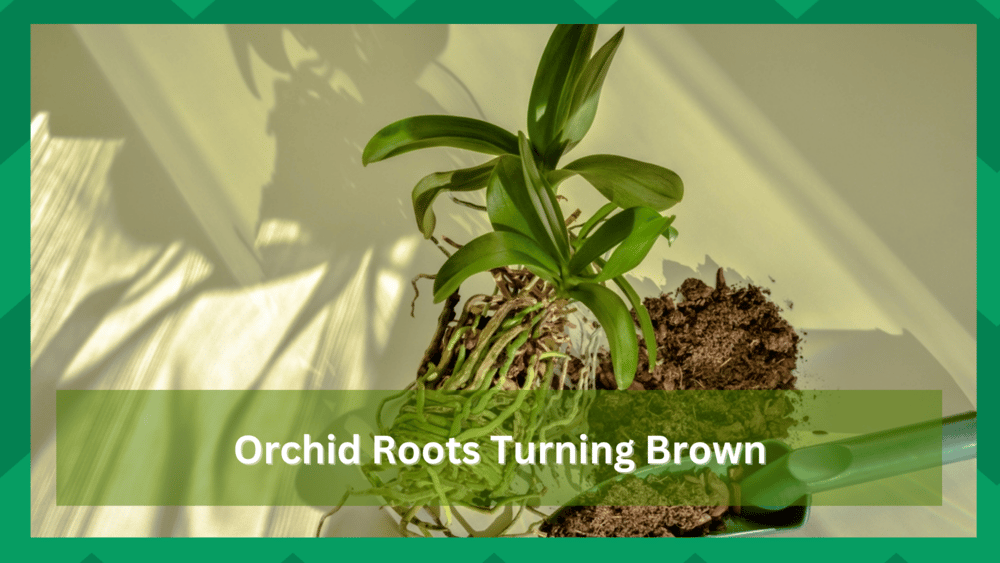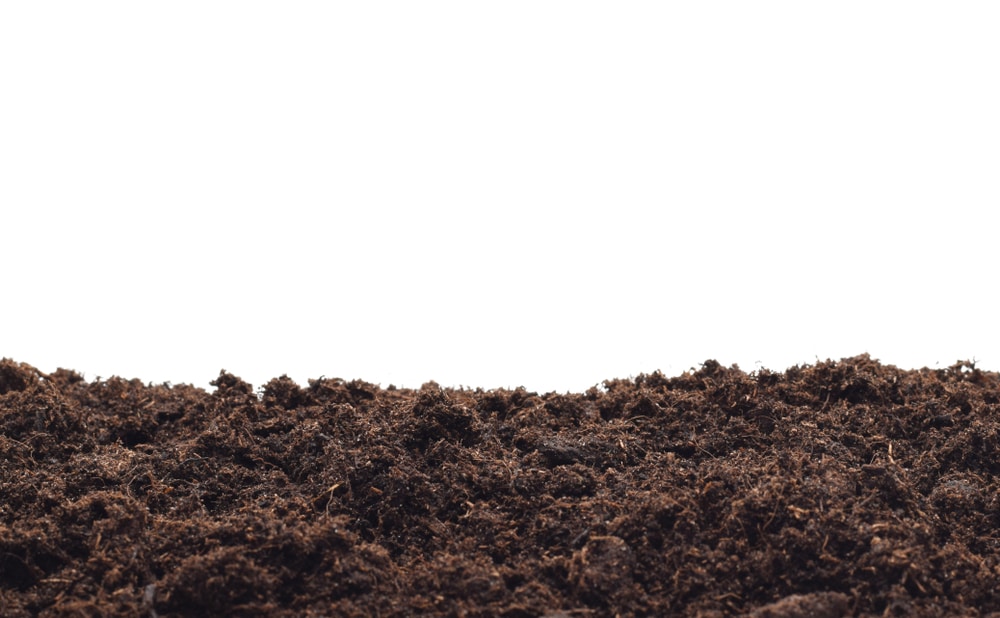
These plants are somewhat delicate and can only survive long if you provide the perfect environmental conditions. There are different types of orchids that you can grow, and each one has additional requirements.
So, do thorough research before buying an orchid for your garden. It would help if you only bought plants that you can take care of quickly. Otherwise, it is better to save money and time by sticking to the plants better suited for your garden.
Recently a few gardeners have asked this question about orchid roots turning brown. While there may be many reasons for this problem, the most common possibilities are listed below.
Why Are My Orchid Roots Turning Brown?
- Excessive Watering
Even though these plants like humid conditions, they can still damage the plant if you provide excessive water.
The roots of orchids need moisture and oxygen to encourage plant growth. The potting mixture uses the oxygen supply from tiny pores to sustain the plant.
However, when you provide excessive water to the plant, that hinders the plant’s growth over time.
So, if you’re seeing the orchid roots turning brown, then now might be a good time to cut back on the water supply. You need to limit the amount of water you give to the plant and ensure that the water drains out of the pot.
You need only sustain moisture in the potting mixture and not let the water stay on the bottom.
But if you didn’t choose the right potting soil and it is not draining well, you should consider changing the surrounding mixture.
No water should be left at the bottom of the pot, and the soil should drain excess water while maintaining moisture levels.
- Root Rot and Fungus
Fungus growth in plats can easily lead to root rot, which is why you are noticing brownish color in your orchid roots.
Luckily, there is a way to save your plant if the situation is not dire. To fix the plant and restore its original health, start by removing the plant from the pot.
After that, you need to gently remove the potting mixture from the roots of the orchid. Now, you’ll be able to see the damage done to orchid roots.
After removing the infected soil, you need to trim the brown parts of the roots. Ensure not to cut roots, as that can permanently damage your orchid.
You must also apply fungicide from your local gardening store on the roots. Once the roots are treated and trimmed, move them to a new potting mixture and ensure that the soil drains well.
Now, you must wait for the plant to develop new roots over time.
It might take a few weeks, but the plant will start growing new roots and recover to full health if you’re lucky. However, if the damage is too much, it will be hard for your orchid to recover at this stage.
- Infected Soil
Lastly, infected soil is also a significant reason your orchid roots turn brown. If you don’t recycle the potting mixture while planting a new orchid, then that is likely why you’re having this issue with the orchid.
Most gardeners know that the potting mix can carry fungi and bacteria to the new plant. Even though the chances of this happening are low, staying on the safe side is still better.
If the above two conditions don’t apply, your potting soil is probably infected. Make sure to seek advice from a gardening expert at your local nursery.
He will help guide you more effectively in managing the potting soil mixture.
Ideally, it would help if you were looking for something that can drain well while retaining enough moisture to encourage plant growth.
These are a few significant reasons why the roots on your orchids might turn brown.
We also presented some methods that can be used to fix the plant if the damage is not too severe. These methods can help save your plant if you implement them quickly.
That way, the plant should recover in time without putting extra work into managing the orchids.
How to prevent Orchid Roots from Turning Brown?
Orchid roots are an important part of the plant and must stay healthy. Unfortunately, one common problem with orchids is that their roots can turn brown, leading to a weakened plant.
Several factors, such as incorrect humidity levels, poor water drainage, or lack of nutrients in the soil, can cause this. Fortunately, there are some things you can do to prevent your orchid’s roots from turning brown and keep them healthy for years to come.
Orchids need higher humidity levels than most other plants, so you may want to invest in a humidifier for your home if you don’t already have one. You can also mist the leaves and roots with a spray bottle filled with tepid water.
The second step is to ensure that your orchid’s soil has adequate drainage. Orchids need well-drained soil to thrive, so you should ensure the potting mix is not too compacted and allow excess water to drain out fully after watering.
You can also use a pot with a drainage hole in the bottom and a potting medium specifically formulated for orchids.
You should also provide your orchid with the right fertilizer to get all the essential nutrients it needs. Choose a fertilizer specifically designed for orchid plants and follow the directions on the package.
Fertilize your orchid once every three to four weeks during the growing season and reduce this amount in winter when the plant is not actively growing.
Make sure you are giving your orchid enough light. If you don’t have a window that provides enough light, you can supplement the natural light with artificial grow lights.
By following these tips, you should be able to keep your orchid’s roots healthy and prevent them from turning brown. With proper care, your orchid will reward you with beautiful blooms for years to come.
If you need help with your orchid’s care, don’t hesitate to contact a local plant expert for advice. With their knowledge and guidance, you can ensure that your orchid gets the best possible care and stays healthy.
- Lack of Sunlight
Orchids are popular and beautiful houseplants, but many gardeners have experienced the frustration of watching their orchid roots turn brown.
Browning roots can be caused by several factors, from too little light to overwatering. Identifying the cause is key to treating the problem and getting your beloved plant back on track.
Here are some of the most common reasons for orchid roots turning brown.
Good sunlight is essential for healthy orchid growth. If your plant is not receiving adequate sunlight, its roots may turn brown. Move your orchid to a brighter spot in your home and monitor the light it receives daily.
Just like excessive sunlight, overwatering can be damaging to orchid roots. When the soil is too wet, it creates an environment where bacteria and fungi can thrive, leading to rot and brown tips on the roots.
To prevent this, always check your plant’s soil before watering; if it feels dry several inches down, go ahead and water it. Allow the soil to dry out completely between waterings.
Incorrect potting media can also cause damaged roots and brown discoloration. Orchids need porous, fast-draining soil that contains ingredients such as bark, perlite, and sphagnum moss.
If your orchid is planted in a dense, heavy soil mix, its roots are more likely to rot and turn brown. Repot your orchid in a light, well-draining mix and ensure the pot has enough drainage holes at the bottom.
If you’re using tap water for your orchid, it could be causing root damage.
Tap water typically contains high levels of chlorine and other chemicals that can be toxic to orchids. Use rainwater or distilled water to keep your plant healthy and its roots from turning brown.
There are several reasons why orchid roots may turn brown, including lack of sunlight, overwatering, incorrect potting media, and tap water.
To ensure your orchid stays healthy and vibrant, ensure it receives adequate light and water, is planted in the right potting mix, and is given clean water to drink. With a little TLC, you can get your orchid back on track in no time!
Concluding Thoughts:
In conclusion, orchid roots can turn brown for a variety of reasons. The primary culprits are lack of sunlight, overwatering, incorrect potting media, and tap water with high chlorine levels and other chemicals.
To ensure your orchid stays healthy and vibrant, provide it with adequate light and clean water in the right potting mix.
With proper care and attention to detail, you will be rewarded with beautiful blooms from your beloved plant.





I’m not sure what is wrong, the roots are turning brown but it’s growing new leaves. Now all the flowers have gone and I cut it back. Then I have one plant the roots are nice and strong but I think I cut back the steam back too far, and the leaves are green. Am I doing something wrong?